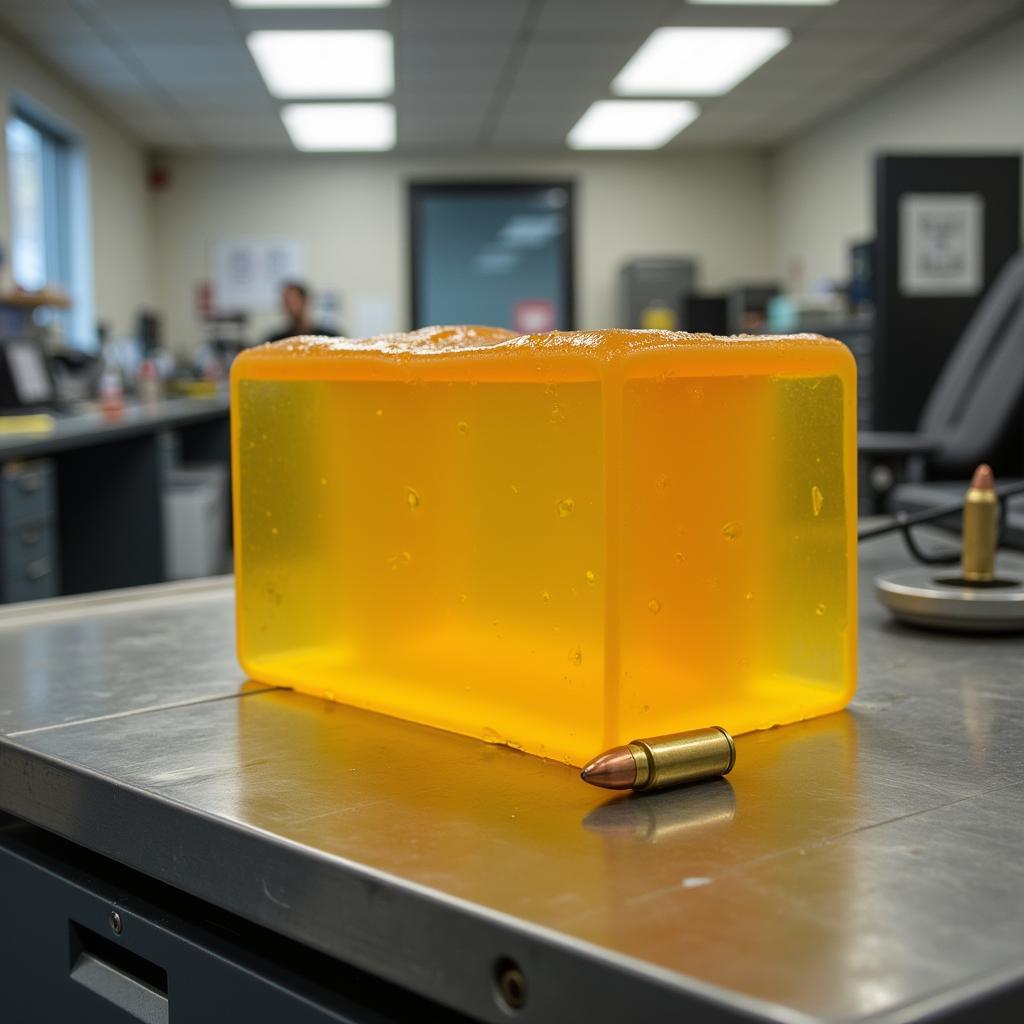Terminal Ballistics Research delves into the often overlooked yet crucial final moments of a projectile’s journey. It’s the study of what happens when bullets reach their target, examining their impact, behavior, and the effects they produce. Far from being a simple matter of penetration, this field encompasses a complex interplay of physics, engineering, and even biology.
The Science Behind the Impact: What Happens at the Terminal Stage?
Terminal ballistics research goes beyond the raw destructive power often associated with projectiles. It seeks to understand the intricate mechanisms that dictate how a bullet interacts with its target. This includes:
- Penetration: How deep does the projectile travel into the target? What factors influence its ability to pierce various materials?
- Cavitation: The creation of a temporary cavity within the target due to the projectile’s energy transfer. This cavity can be significantly larger than the bullet itself and contributes to tissue damage.
- Fragmentation: Does the projectile break apart upon impact? If so, how do these fragments behave, and what additional damage do they inflict?
- Yaw: The angle at which a bullet strikes its target can drastically alter its effects. Terminal ballistics explores how yaw affects penetration, cavitation, and overall damage.
 Terminal Ballistics Testing
Terminal Ballistics Testing
Applications Beyond the Battlefield: The Wider Scope of Terminal Ballistics
While often associated with military and law enforcement applications, terminal ballistics research has far-reaching implications in other fields as well. These include:
- Medical advancements: Understanding how projectiles interact with human tissue is crucial for developing better protective gear, surgical techniques, and trauma care protocols.
- Forensic science: Terminal ballistics plays a critical role in crime scene investigation, helping to determine trajectory, range of fire, and the type of ammunition used.
- Wildlife conservation: Researchers use terminal ballistics to develop more humane and effective methods for animal population control and tranquilization.
- Aerospace engineering: Understanding the impact dynamics of high-velocity objects is essential for designing spacecraft shielding and mitigating the risks posed by space debris.
Unraveling the Ethical Considerations: Balancing Research and Responsibility
As with any scientific discipline that deals with potentially lethal force, terminal ballistics research operates within a complex ethical landscape. Researchers and practitioners must constantly grapple with questions surrounding:
- The potential for misuse of research findings: How can we ensure that the knowledge gained from terminal ballistics research is not used to develop more deadly weapons or cause unnecessary harm?
- Transparency and accountability: It’s essential to maintain openness about research methodologies, findings, and potential limitations to foster trust and ethical conduct within the field.
- Animal welfare: When animal subjects are used in terminal ballistics research, it’s crucial to adhere to the highest ethical standards of care and minimize suffering.
 Ballistic Gelatin Test Setup
Ballistic Gelatin Test Setup
The Future of Terminal Ballistics: Advancements and Ongoing Exploration
The field of terminal ballistics is constantly evolving, driven by technological advancements and the pursuit of deeper understanding. Key areas of future research include:
- Computational modeling: Sophisticated computer simulations are becoming increasingly powerful tools for predicting projectile behavior and impact effects, reducing the reliance on physical testing.
- New materials: The development of innovative materials, such as advanced ceramics and composites, is leading to lighter, more effective body armor and protective equipment.
- Non-lethal alternatives: Terminal ballistics research also plays a role in the development of less-lethal weapons and projectiles designed to incapacitate targets without causing fatal injuries.
The quest to understand the intricacies of terminal ballistics is an ongoing journey. As research continues to shed light on the complex interplay of forces at play, we gain valuable knowledge that can be applied to a range of fields, ultimately contributing to a safer and more informed world.
FAQs about Terminal Ballistics Research
- What is the difference between internal, external, and terminal ballistics? Internal ballistics focuses on the projectile’s behavior inside the firearm, external ballistics examines its flight path, and terminal ballistics investigates its impact on the target.
- What are some common materials used in terminal ballistics testing? Ballistic gelatin, soap blocks, and clay are often used to simulate human tissue, while various metals and composites test armor penetration.
- How is terminal ballistics research used in the medical field? Understanding bullet wounds helps develop better surgical techniques and trauma care, while the knowledge of impact forces aids in designing safer vehicles and protective gear.
Do you need help with terminal ballistics research?
Contact us today! Our team of experts is available 24/7 to answer your questions and provide support.
Phone: 0904826292
Email: research@gmail.com
Address: No. 31, Alley 142/7, P. Phú Viên, Bồ Đề, Long Biên, Hà Nội, Việt Nam.